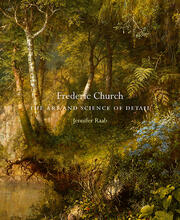Jennifer Raab
Jennifer Raab specializes in the arts of the United States and the history of photography. Her scholarship engages with the history of science and medicine, the environmental humanities, and the visual and material culture of war, racial violence, and memory.
Her current book, Relics of War (under contract with Princeton University Press), centers on a single photograph. Taken just after the Civil War, it presents an altar-like arrangement of relic objects collected by Clara Barton (the founder of the American Red Cross) from the notorious Confederate prisoner of war camp at Andersonville, Georgia. How can death be imagined by a photograph without picturing a single body? What responsibility does the state have to its veterans? How is white military sacrifice codified against Black experience? What constitutes a war crime and can a photograph stand as evidence? This is a photograph about violence, grief, advocacy, accusation, memory, and martyrdom.
Her first book, Frederic Church: The Art and Science of Detail (Yale University Press, 2015), examined the aesthetics of detail that fundamentally shaped nineteenth-century American landscape painting and that was inseparable from scientific discourses of the time. More broadly, it asked: What is a detail? What does it mean to see a work of art “in detail”? Working against the persistent critical framework of the nation state, the book sought to take seriously the visual form of Frederic Church’s massive and meticulous canvases, resist the easy elision of landscape and metaphor, and theorize detail as foundational to art historical practice.
She has co-authored a book and exhibition with colleagues from Yale, Picturesque and Sublime: Thomas Cole’s Trans-Atlantic Inheritance (Thomas Cole National Historic Site and Yale University Press, 2018) and contributed the lead essay to East of the Mississippi: Nineteenth-Century Landscape Photography (National Gallery of Art, Washington, D.C. and Yale University Press, 2017). Other recent essays and articles have considered California Gold Rush imagery, emerging political philosophies of individualism, and the mythologies that link Spanish and U.S. colonization of Indigenous lands; the relationship between panoramic vision and telegraphic language in early railroad guidebooks; history painting and the aesthetics of mapping; and alchemy in contemporary sculpture. Her work has appeared in Art Bulletin, Art History, American Art, and Journal of American Studies.
Before joining the Yale faculty in 2013, she held postdoctoral fellowships at the Institute of Fine Arts, New York University and at the John F. Kennedy-Institut für Nordamerikastudien, Freie Universität, Berlin. Her work has been supported by the Andrew W. Mellon Foundation, the Wyeth Foundation, Dumbarton Oaks, and the Terra Foundation for American Art.
At Yale, Raab teaches courses on American art and the history of photography, most often based on university collections. Her courses explore topics such as the material histories of photography, contested monuments, the representation of nature, landscape theory, photojournalism, and the relationship between art and extraction. She is an affiliated faculty member of both the programs in the History of Science and Medicine and Public Humanities, and has served on the steering committee of the Yale Environmental Humanities Program since its inception in 2017. In 2021 she received the Graduate Mentor Award in the Humanities, Yale’s principal award for superb teaching, advising, and mentoring of graduate students.




